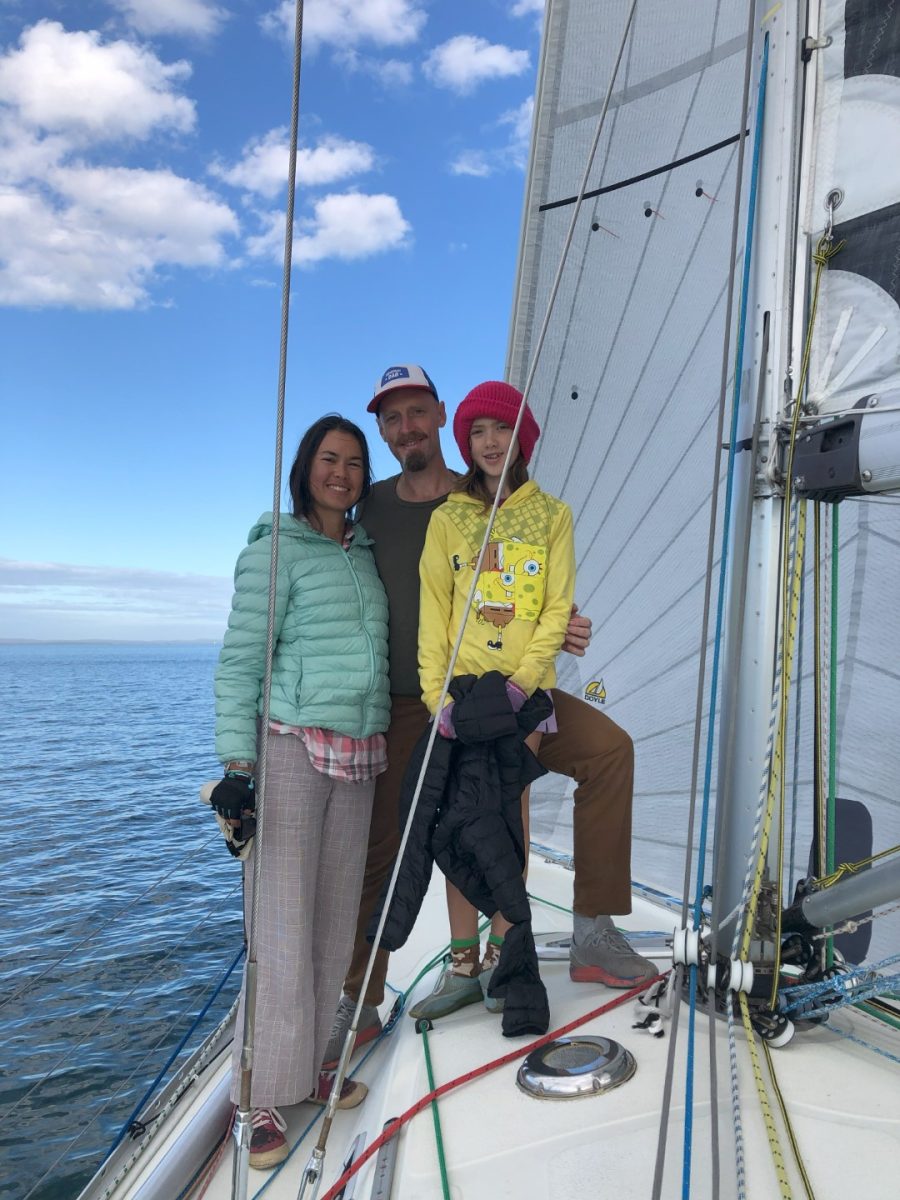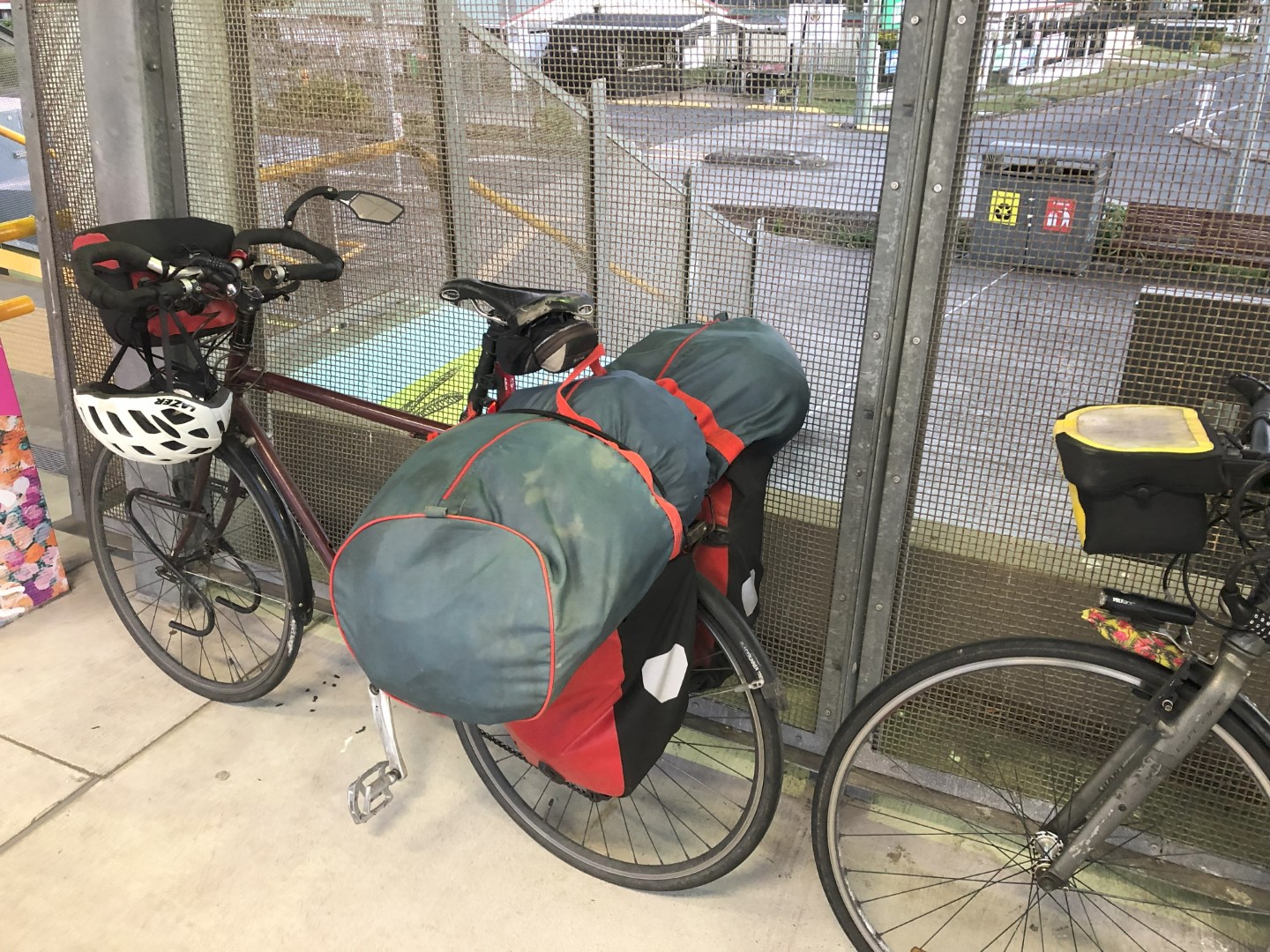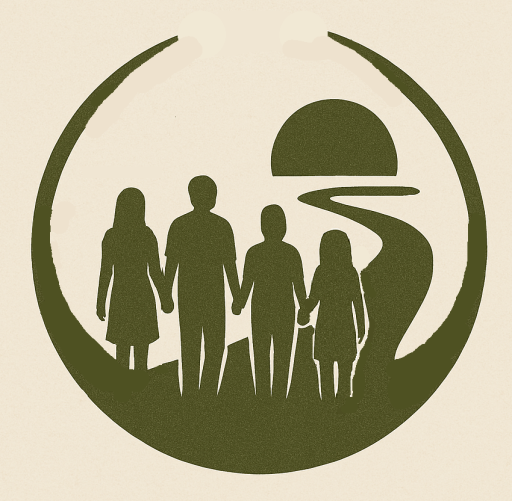While our lives have stayed firmly grounded at home these past months, a lot of time has gone into movement. Not the fast kind, but the deliberate, effortful kind. Sailing and cycling continue to shape how we think about transport, time, and what it means to live our values.
Sailing: The Long Road to a Different Kind of Travel
Learning to sail was never meant to be the main event. It was supposed to be a means to an end, a way to reach another continent without flying. But as we’ve dug deeper into it, sailing has become not just a challenge but a source of support. It has occupied far more time than its role in our projects really warrants, but that’s evidence of just how big a deal global travel is, when you factor in all the impacts.
In the absence of any other practical opportunities to learn, we’ve been racing most weeks at the local sailing club. We don’t live near the marina, so getting there is a full-day commitment for whoever is on that week. No driving, because that would defeat the point. So it’s bikes and trains, sometimes both, and the occasional long walk. It’s a little inconvenient by modern standards, but meaningful all the same and a good time to catch up on a book or some marking.

Emelie recently took the helm in the Ladies Skipper Race and did most of the steering herself. Dani joined Emelie and I for a Sunday race on the holidays. She hadn’t brought a book or really anything much to do, and doesn’t quite have the strength for handling the sheets (control ropes). So boredom got the better of her. She did get her first chance at the helm (steering) while motoring back into the marina. Which she declared easy. Too right there Dani. We’ll see how she enjoys a dinghy where every small movement matters. Adam just completed a four day sailing camp with Scouts, learning just that. The social dynamics were tough at times, being among the younger particpants, he came home eager for more. His knowledge of sailing terms (and there are many!) has rapidly expanded and he has volunteered to handle the jib sheets next time.

Emelie and I have now joined about six or seven races each and two together. They are usually between 10 and 15 nautical miles. It’s quite the social experience and sometimes a bit exciting. The community has been welcoming and generous. People go out of their way to help us find a crew spot, walk us down the docks, and connect us with other skippers. We hadn’t expected to find a such warm community here, but it’s been one of the best surprises of the whole project so far.
Of course, we’re still trying to find a boat to take us further afield. Even just an overnight for the experience. That’s been harder. The online spaces for finding international crew are filled with young, experienced, or very flexible travellers. Many are child-free, which seems to make them more appealing to captains. So we’re building up our own experience slowly and hoping that when the time comes, we’ll be useful enough to be welcome aboard.
Cycling: Our Everyday Vehicle
Closer to home, the bike remains our main mode of transport. In fact, our bikes cover more distance each year than our car does. We buy secondhand bikes for the kids and keep them well maintained. They outgrow them quickly, but it’s a small price to pay compared to vehicle ownership. Repairs are ongoing and sometimes creative, but we prefer that over adding more waste to the world.

Driving is now a rarity, and when we do it, the experience is jarring. Recently, Emelie had to drive across town in mild traffic. She offered to do collect one of the other scouts on the camp with Adam and asking him to take the train seemed a bit much! She found the experience really draining. It reminded her of when she used to commute this way daily for a few months and would get home so wrought she felt like drinking just to unwind. And she’s never really been a drinker. It was a good reminder of why we stepped away from that lifestyle in the first place.
Taking the train or cycling with the kids can feel like a big time investment, but we try to see it not as lost time, but as reclaimed time.
How Much Does Transport Really Cost?
A month or two ago, I shared the transport cost comparison on Reddit. It stirred up more controversy than I expected. The post looked at transport spending over time and pointed out just how expensive private vehicle ownership has become. Some of the strongest pushback came around the figures themselves.
Widely communicated numbers, which were the ones I found in just about every place I looked, suggest the average Australian household spends around $26,000 year on transport. This seems to include finance costs and assumes every car is bought on credit. The ABS puts the figure closer to $18,000 when adjusted for inflation, though some transport-related costs might be hiding under separate headings like insurance or debt repayments.
Whichever figure you accept, our household spending on transport is a tiny fraction of that at about $3,000 per year. The post was meant to illustrate what’s possible. And to be clear that includes bike repairs, train fares, and the minimal use and upkeep of our car. No new cars, no finance repayments, no high insurance bills – though there is an occasional expensive repair.
That difference leaves us with far more room in the budget for things that matter to us. Giving generously. Taking time off work. Supporting local projects. Living simply.
The Real Cost of Convenience
In the end, both sailing and cycling are about slowing down. About choosing to do something the hard way, not out of obligation, but out of alignment. We’ve come to see movement as more than just getting from A to B. It’s how we shape our days. It’s where we pick up fitness and connection to our surroundings. I’ts how our kids learn resilience and useful skills. It’s where we remember what our time is worth.
Before the widespread use of fossil fuels, it was rare for people to travel more than a few kilometers per day. People were connected with place. They knew their surroundings intimately and would maintain social ties with just a few hundred people. As we have become better at extracting and consuming million year old energy we have literally increased the speed of our lives. From under 0.2km/h averaged across the year for most of human history to about 1.5km/hr in the 1990s and now approaching 5km/hr when factoring air travel. Many of us now travel further in a year than 99% of humans did their entire lives. And while they took only what they could carry we are now accompanied by tonnes of metal on most trips. Is it any wonder we feel exhausted and out of touch?
Have you done something to slow down? What’s working for you? And what isn’t?
If you missed our earlier winter updates, you can catch them here (food and fixing) and here (community and connections).
